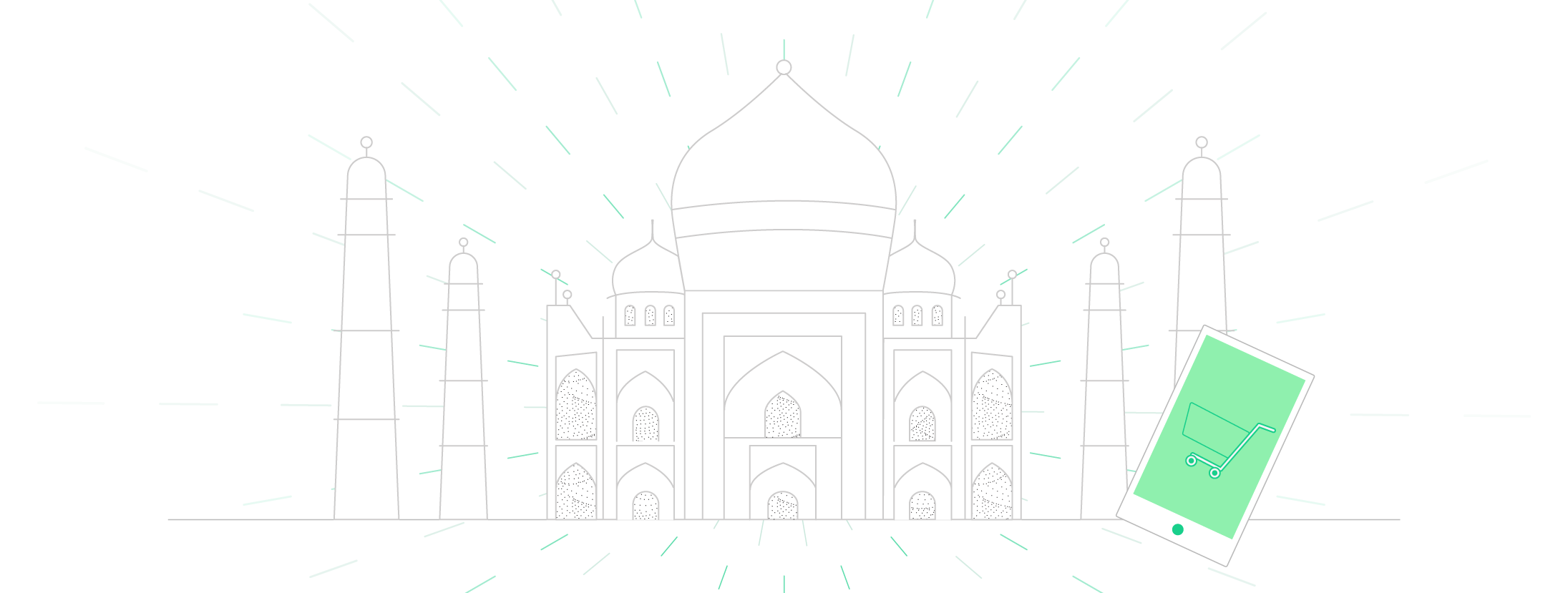Risk and Reward in the Indian Market

India’s eCommerce market is widely considered the most rapidly expanding in the world. Get insights to become acquainted with the shopping patterns of this consumer segment, prevent CNP fraud, and boost profits.
India’s eCommerce market is widely considered the most rapidly expanding in the world. Annual growth is currently 51%, and market value is expected to hit $120 billion by 2020. Bearing in mind India’s huge (and increasingly tech-savvy) population, plus the fact that over 80% of online transactions come from major international e-tailers (compared to the global average of 50%), it’s clear that there’s plenty of room for new parties to get in on this “entrepreneurial gold mine”.
Earlier this month the Rakhi Festival kicked off the major Indian buying holidays. The high online shopping volume is expected to continue through to December, when Indian consumers take advantage of the North American sales season. Unfortunately, online retailers are failing to make the most of this thriving market due to a lack of familiarity – including fear of CNP fraud. In some cases this has prevented them from entering the market. In others, they may have already opened their virtual doors to cross-border sales from the region, but are losing revenue to false declines.
In this blog, I share some insights to help retailers across the globe get acquainted with the shopping patterns of this consumer segment, and give tips to help prevent fraud, minimize the rejection of legitimate customers, and boost profits.
A Snapshot of the Market
Although online shopping has become more common in recent years, and customers are becoming increasingly comfortable with the idea of paying for goods digitally, many Indian shoppers still prefer using other modes of payment.
According to Nielsen’s Global Connected Commerce Survey, around 83% would rather use cash on delivery (COD) for online purchases, unsurprising given India’s well-established cash culture. It was the possibility of COD that propelled the eCommerce market in the first place, but figures for the first quarter of 2017 indicate that the government’s most recent attempt at demonetization is leading to more digital payments. Only time will tell how effective it has been in reducing the number of customers opting for cash (or card) on delivery.
The preference for COD is so strong that some retailers have offered customers incentives to use digital payment methods. But given that a fear of CNP fraud plays a major role in the nation’s reluctance to purchase via credit card, gaining trust and improving the customer experience will likely go far in convincing shoppers that online payments are safer and more convenient.
The truth is that online merchants should be able to provide customers from this region with a positive experience – our data indicates that over 95% of orders from an Indian IP can be safely approved. But to minimise false declines and limit the use of high friction verification methods, they need to understand their audience, collect the right data, and appropriately tailor their fraud detection systems to handle these cross-border transactions.
Mobile Mania
The majority of consumers from emerging markets are making online purchases through smartphones, and India is no exception. In fact, Indians are using mobile devices even more than other consumers in the region. According to our data, over 60% of online orders with an Indian IP are made via mobile – higher than the average Asia Pacific rate. In general, younger shoppers are more likely to shop via mobile, which is consistent with the demographics of Indian customers: In 2016, 90% of 25 – 34 year olds had shopped using their phones. And with predictions that by millennials will comprise a third of the population by 2020, mCommerce is likely to only increase in popularity.
Given that almost 670 million people will have access to mobile internet services in India by 2020, it’s essential that retailers optimize their fraud review processes to account for this channel. Mobile orders from customers in India are generally safer than desktop orders (97% vs 94% approval rate), but because techniques that work to effectively review desktop orders often interpret legitimate mobile behaviour as risky, mobile orders are prone to high numbers of false declines. Retailers should also note that mobile orders are significantly lower in value than those placed via desktop – a common trend, which relates to the reluctance of shoppers to make expensive or complicated purchases via mobile.


